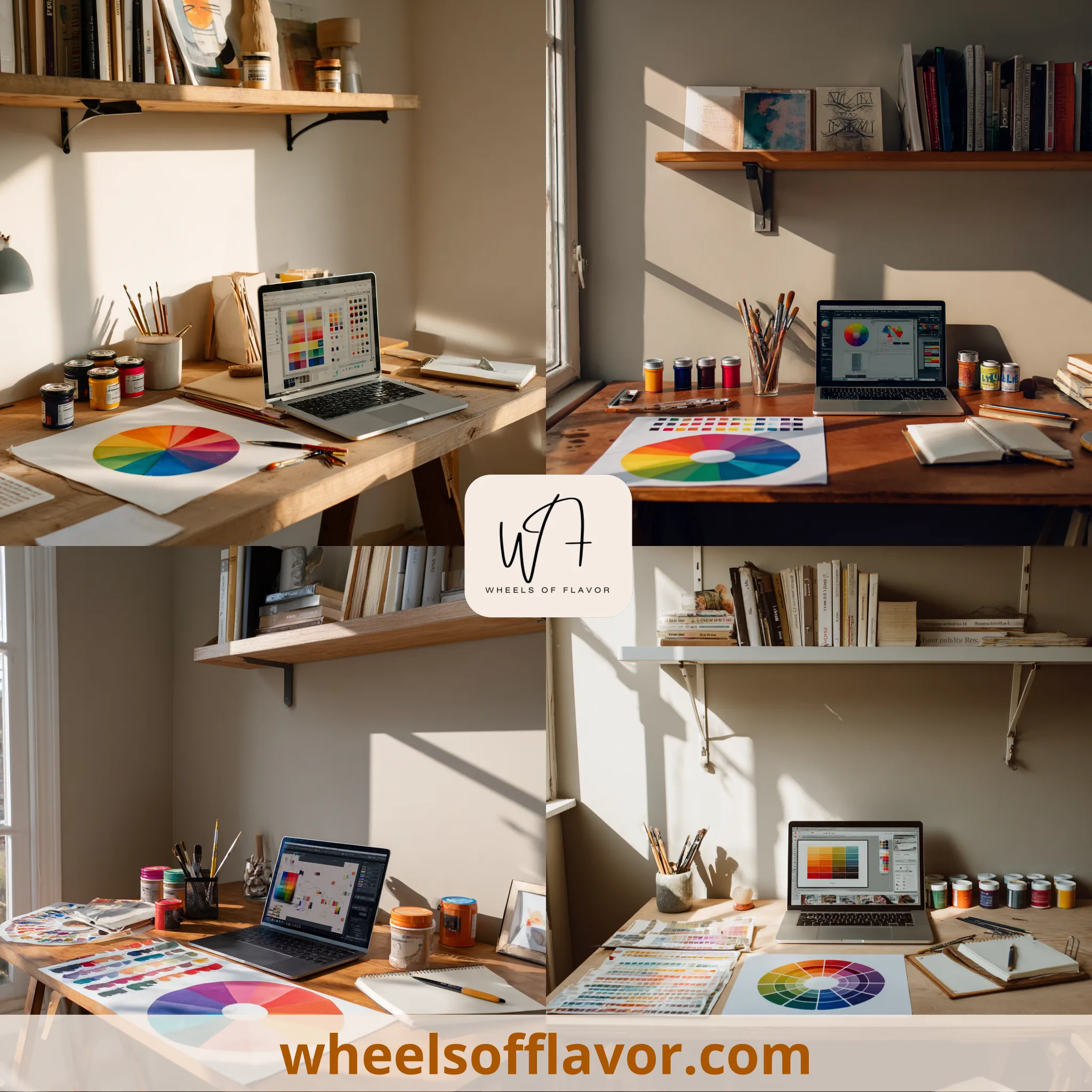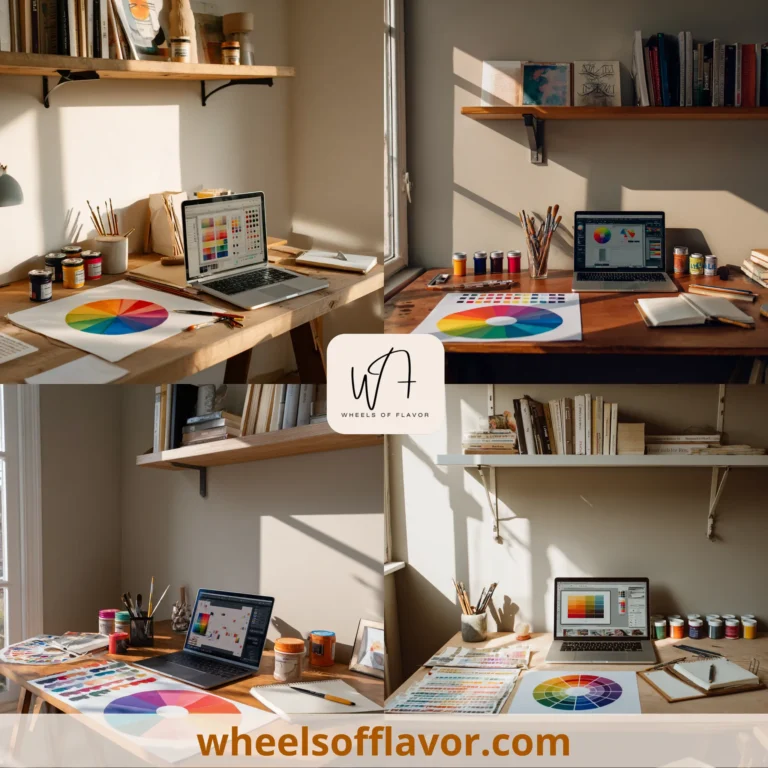
The color wheel is a timeless tool that can transform any space from dull to dynamic, making it an essential element in home decor. Understanding the color wheel project ideas opens up a world of possibilities for DIY enthusiasts and design lovers alike. By mastering color theory, you can create harmonious palettes that evoke specific moods, enhance room functionality, and reflect your personal style. Whether you’re redecorating a living room, sprucing up a bedroom, or tackling a small craft project, incorporating the color wheel ensures cohesion and visual appeal. This guide will explore innovative ways to use the color wheel in your decor, helping you achieve professional-looking results without breaking the bank. Embrace the power of color to make your home a more inviting and expressive place. With practical tips and inspiration, you’ll be ready to dive into projects that range from simple accents to bold statements. Let the color wheel be your guide to a more beautiful and balanced living environment.
Color Wheel Project Ideas for Beginners
Starting with color wheel project ideas doesn't have to be intimidating. For beginners, simple projects like painting accent walls or creating DIY color swatches can make a big impact. Use the color wheel to choose complementary colors—those opposite each other—for a vibrant contrast, or analogous colors—those next to each other—for a soothing, cohesive look. For example, pair blue with orange for a lively effect in a child's playroom, or blend greens and blues for a calm bedroom retreat. Easy projects include making a color wheel-inspired throw pillow cover or a hand-painted sign. These ideas are budget-friendly and require minimal supplies, often just paint, fabric, or paper. By starting small, you build confidence and gradually tackle more complex decor tasks. Remember, the goal is to have fun and learn as you go. For more inspiration, check out this guide on color theory from The Spruce, a trusted resource for home decor advice. With practice, you'll find that the color wheel is your best friend in creating spaces that feel both personal and polished.
Advanced Color Wheel Project Ideas for Experienced DIYers
For those with more experience, advanced color wheel project ideas can elevate your decor to a professional level. Think beyond basic palettes and explore triadic or split-complementary schemes for dynamic and sophisticated results. Projects might include designing a custom mural using a color wheel to ensure balance, or upcycling furniture with intricate paint techniques like ombre or color blocking. Use the color wheel to mix custom paint shades, creating unique hues that perfectly match your vision. In a dining room, for instance, a triadic scheme of red, yellow, and blue can add energy and elegance. Advanced ideas also involve integrating textures and patterns; for example, use a color wheel to select fabrics for quilting or upholstery that harmonize without clashing. These projects require more time and skill but offer rewarding, one-of-a-kind outcomes. Always test colors in small areas first and consider lighting conditions, as natural and artificial light can alter perceptions. By mastering these techniques, you'll craft spaces that are not only beautiful but also deeply reflective of your creativity and expertise.
Color Wheel Project Ideas for Specific Rooms
Tailoring color wheel project ideas to specific rooms maximizes their impact and functionality. In the living room, use the color wheel to choose a scheme that promotes relaxation and socialization; for example, analogous colors like blue and green create a serene atmosphere. A project could involve painting an accent wall or selecting throw pillows and rugs that complement each other. In the kitchen, opt for warm, appetizing colors like reds and yellows from the color wheel to stimulate energy—try a DIY backsplash or painted cabinets. For bedrooms, cooler tones such as blues and purples aid in restfulness; consider a color wheel-inspired bedding set or wall art. Bathrooms benefit from spa-like palettes using analogous blues and greens for a refreshing feel. Each room has unique needs, and the color wheel helps ensure choices enhance rather than detract from the space. Incorporate these ideas with practical elements; for instance, in a home office, use the color wheel to select colors that boost focus, like greens and neutrals. By room-specific applications, your decor becomes both aesthetically pleasing and highly functional.
Conclusion
In summary, color wheel project ideas offer a versatile and effective approach to enhancing your home decor. From beginner-friendly accents to advanced DIY endeavors, the color wheel empowers you to create spaces that are harmonious, expressive, and tailored to your lifestyle. By understanding color theory, you can avoid common pitfalls like clashing palettes and instead achieve a professional look with ease. As you continue to explore these ideas, remember that experimentation is key—don't be afraid to try new combinations and adapt projects to your personal taste. Looking ahead, consider how trends like sustainable materials or smart home integration might influence future color choices. For ongoing inspiration and community support, visit our internal resource at https://wheelsofflavor.com/diy-projects. Embrace the joy of crafting with color, and let your home reflect the beauty and balance that the color wheel provides. Start your next project today and transform your space into a true reflection of you.
Frequently Asked Questions
Q: What is the best way to start with color wheel project ideas if I'm a complete beginner?
Begin with simple projects like painting a small accent wall or creating a color swatch chart. Use the color wheel to choose complementary or analogous colors for a cohesive look. Start with inexpensive supplies and practice on less visible areas to build confidence.
Q: How can I use the color wheel to choose colors for a small room to make it feel larger?
Select light, cool colors from the color wheel, such as blues or greens, which tend to recede and make spaces feel more open. Avoid dark shades that can make a room feel cramped. Pair with mirrors and good lighting to enhance the effect.
Q: Are there any common mistakes to avoid when using color wheel project ideas?
Yes, avoid using too many colors at once, which can lead to a chaotic look. Also, remember to consider lighting—test colors in the actual space at different times of day. Ensure colors complement each other using the color wheel to prevent clashes.

